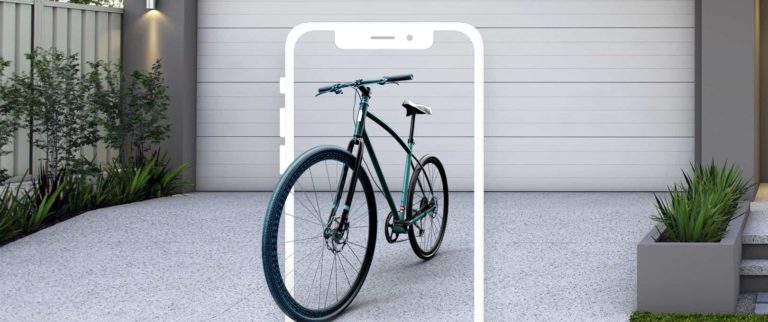
One of the most popular AR use cases is visualizing products on “faces & spaces.” That includes products like cosmetics and couches. The former is a big “try-before-you-buy” category while the latter is all about making sure big items fit in your home before buying.
All of this has amplified as it has piggybacked on Covid-era eCommerce inflections. AR brought back some of the real-life dimension that was yanked away from consumers in retail lockdowns. The question is if its exposure and accelerated adoption sustains longer-term.
Meanwhile, a handful of companies have leaned into AR product visualization, including IKEA, Wayfair, and Houzz. They’ve each launched features or apps to help consumers visualize home goods. It’s all about boosting buyer confidence with a better sense of size and style.
That buyer confidence is a key factor, as it drives eCommerce performance. Specifically, AR can boost conversions by as much as 300 percent and reduce returns by as much as 40 percent. These KPIs in turn reinforce AR investments from the above players.
Prime Time
To that end, Shopify has joined this list with various rollouts for AR try-on features. In fact, the above conversion figures include results from those programs. It even created a dedicated “Head of VR/AR” position, held by AR proponent and industry figure Daniel Beauchamp.
Its latest move was the recent acquisition of AR startup Primer. For those unfamiliar, Primer specializes in AR product visualization with a focus on home renovation. Specifically, its strength is lighting and textures, which are key factors when deciding things like paint and wallpaper.
For example, in interior design projects, consumers can point their camera at a wall to then superimpose a variety of styles and textures. It’s the modern — and more visually intuitive — version of the longstanding practice of holding up paint swatches to try out colors and patterns.
Primer pulls this off through proprietary 3D modeling tech and partnerships with tile and textile brands. This gives it an inside track to develop product simulations, not to mention a channel for distribution and monetization. It otherwise reaches consumers through its iOS app.
But Primer’s go-to-market path now takes a new direction. Shopify hasn’t disclosed its exact plans but it will likely deploy Primer’s technology in its own high-reach channels such as its Shop app. It could also integrate the technology directly on its web-based merchant pages.
It’s also possible that this is more of a tech & team acquisition. Primer’s specialty in lighting and textures could extend beyond paint & wallpaper, serving more broadly to boost realism in 3D models across the board. That would certainly boost Shopify’s camera commerce chops.
Shopping Spree
In each of the above speculative deployments for Primer’s technology, the goal for Shopify is the same: to boost its stickiness among consumers and its value proposition to merchants. The latter is a strategic driver that continues to gain steam at Shopify as an organizational priority.
For example, it has been on a shopping spree for distribution partnerships to give its merchants greater reach and scale. To attract them to the platform as an alternative to selling on Amazon, these distribution flows include Walmart, Google, Facebook, BuzzFeed.
Deeper AR integration will join those efforts in the broader push to attract and retain merchants. In fact, home decor is an underserved segment for Shopify. So the Primer acquisition is a clear move towards expansion into this opportune — and AR conducive — vertical.
Meanwhile, this is all underscored by the growth in “camera commerce.” According to our research arm, ARtillery Intelligence, AR will influence $57.8 billion in physical goods spending by 2025. We’ll keep watching for moves from Shopify and others to capture a piece of that.






